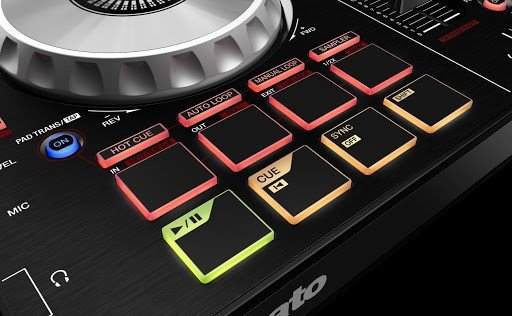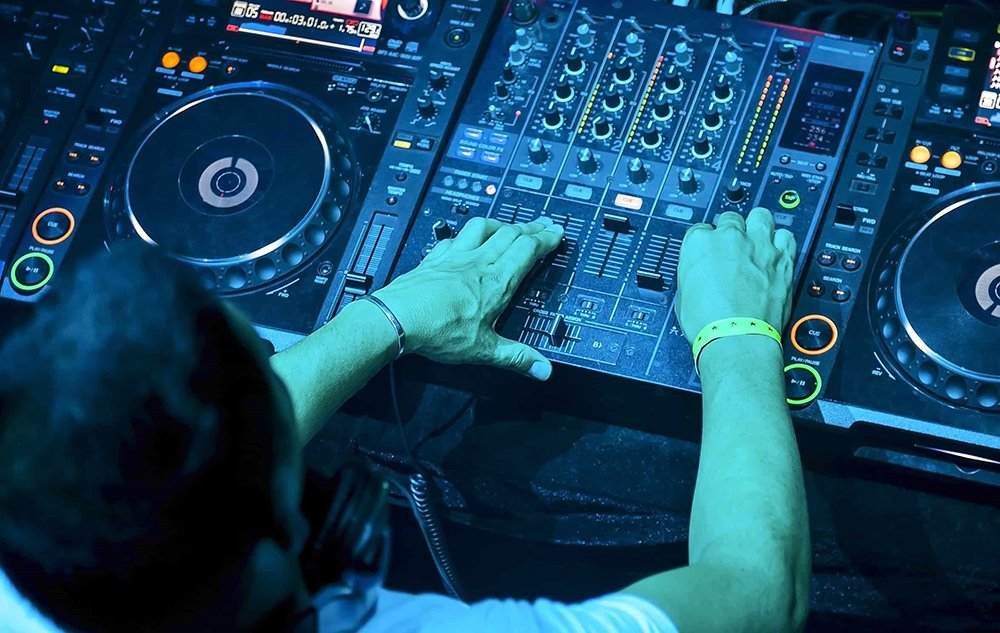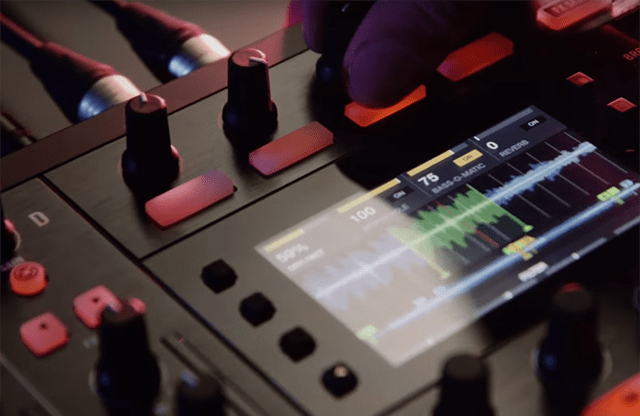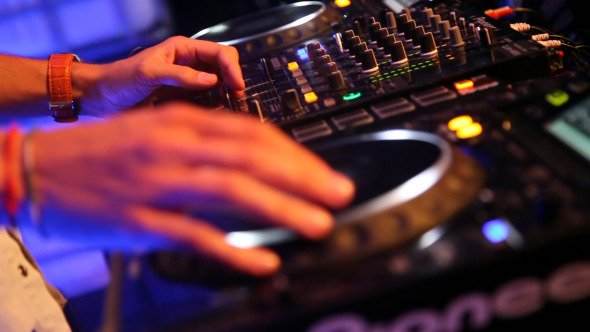Disclosure: This post contains affiliate links, which means we may earn a commission if you purchase through our links at no extra cost to you.
Many beginners and upcoming DJs usually ask this basic question and many of them still ask this common question and the answer is not straightforward.
You need to understand the primary usage of cue buttons to improve your DJing and this guide is exactly about that. Most of us see a cue button on the software or on the top of a mixer panel and are curious about it.
The cue button is available in almost all the software and even on CDJs and controllers as well.
There are more than one cue buttons on a mixer and you need to understand them in a little more detail. So, let’s get started.
Table of Contents
History of Cue Button
The story of the cue button is very interesting. It goes back to the days of vinyl players on turntables.
Vinyl has a lead-in-groove at the beginning of each track which is a no sounds area of a few seconds.
After dropping your needle in the beginning, the first beat starts after a few seconds.
But DJ can’t wait for even a fraction of a second. In those days, DJs used to hold the record at the exact point of the beat so that the music played the moment they let it go.
This was called slip-cuing because by holding the record, it slipped on the slipmat of the platter.
Thereafter, Radio DJs started using it, because they too wanted the music to start playing immediately after they stopped talking.
In modern DJs, the cue point has become more important for DJ mixing for perfect beatmatching.
Cue points enable us to skip unwanted parts of tracks and skip long intros or outros.
Headphone Cue

It is the most basic type of cue and is also known as a mixer cue or monitor cue.
The headphone cue is only audible to the DJ and not played on the main output speakers.
It helps us cueing about the next song to be played and we can do the beatmatching in your headphones without interfering with the main live performance.
The headphone cue button is usually located near EQ filters or faders. If we talk about the software decks, headphone cue is found in the mixer and channel sound controls section of the deck.
With this type of cue, you can find the start of the beats in a track, their timing, and the keys.
Cue Point
It is a type of marker to help you in marking a particular point on a track. E.g. if you want to create a cue point at the start of a track where the actual music in the track starts playing, the cue point marks that beginning.
It means that the cue point is the starting point. This will aid you in perfect beat matching.
If the track is paused and you click the cue point button, it sets the cue point.
If a track is playing and you press the cue track button, it takes you to the beginning cue point of the track.
That means that the track gets restarted at the cue point. If instead of pushing the button you keep holding the button, it takes you to the cue point and keeps on playing the track as long as you keep holding it.
The moment you release the button, the track pauses or stops.
Cue point is easier than manual cueing on a vinyl where you used to hold it patiently.
In a mixer, the track is ready to cue at the click of a button. Usually, cue points are set up at the beginning of a track.
Mixer lets you set up multiple cue points for additional options.
How to use the cue button
It varies from software to software and hardware to hardware. But the basic function remains the same.
You can play the track and come at a point in the track where you want to save your cue point. Now you can pause the track or hold the jog wheel.
You can also adjust the jog wheel forward or backward to come to the exact point.
Once you are satisfied that you have reached the exact point, simply press the cue button.
The cue point is saved successfully. Now you can revisit this cue point any time and the song will jump to that specific point called cue point and the track starts playing.
For cuing, you can hold it and release it when you want to or you have another option of just playing it.
Hot Cue

This button helps you in creating additional cue points on a track. E.g. after a drop, after vocals, to skip a part of the track, etc.
You can create a hot cue to such points on the track so that you quickly jump to those points.
You can also skip an uninteresting part. Whenever you select the hot cue button, it takes you to the setpoint immediately.
This can help you in being more creative.
You can easily skip to the good parts of the song and skip the areas which you don’t like.
Cue Vs Hot Cue
What is the difference between both the terms?
The hot cue feature was impossible to do in turntables and vinyl. But modern DJs can use hot cues to show more creativity.
Cue points are created by holding or pausing and then saving it. But the hot cues can be created on the go.
It can be done when the track is being played to the audience or you can set them beforehand as well for your convenience.
That way you can use them in the mixing whenever you need them.
When you press the hot cue, it starts playing immediately and you can come back to the same point if you feel that your audience likes it again and again.
When to use hot cues
You can become very creative with hot cues. You can set hot cues at a number of places within a track.
You can try setting them at the big drop in a track. It can be set at the start of a vocal piece in a song.
You can even shift back and forth for a creative remix. It is similar to sampling but it is created and accessed without using a sampler.
You need not assign samples at all. You can get them while the track is playing. But, mind you, it comes with a bit of practice.
Once you get the hang of it, it works wonderfully in live performances.
Even in a scratching scenario, hot cues can be used to come straight to the start of a scratch routine.
In the old days, you used to spin the vinyl fast to come to that point or maybe reposition the needle by rough approximations.
But in modern mixers, you can jump to all the hot cues instantly with full accuracy.
Let’s say you have 7-8 types of sounds in the track and you want to visit all of them in quick succession.
Hot cues even let you do that instantly. You can be as creative as you want and the sky is the limit.
You can design your own creative style of mixing and scratching with the help of hot cues. The crowd always loves creative DJs.
A simple DJ Cue trick
Now we will tell you a simple trick by using hot cues and simple cue buttons. If you want to create a live mashup do the following.
Let us say track 1 is being played and you suddenly want to add a vocal mashup of track 2.
In the headphone, you set the hot cue at a point just before the vocals of track 2.
Track 2 is frozen. Click the hot cue to get to that point on track 2.
Next, you press the cue point then configure the cue to restart the track from that point.
Now you just need to hold down the cue button and play the track as long as you’d like it to play.
Track 2 play over track 1 and you release the cue point button. Now you can use this to drop the vocal on the main track at any time to create a vocal mashup.
This is popularly known as cue sampling. You need not get these samples ready before the performance.
Cue Tapping

Cue tapping is like an aberration of a feature or more appropriately, a misuse of a button.
In cue tapping, DJs keep on tapping the cue button to drop the beat at the exact point they want.
It ensures that the beats match perfectly and they are not required to adjust the jog wheels after the song has started playing.
It gives a professional touch to beatmatching but at the cost of a cue button which may fail due to overuse.
Cue tapping increases the wear and tear dramatically. DJs should not tap very hard.
They may lightly tap on the button a number of times and finally press the button fully when the beat is dropped.
This way it is ensured that the button is pressed only once and light tapping may not increase the wear and tear.
Alternatively, if you see a quantize button in the software or on your mixer, it aligns your beats instantly.
This will avoid misuse of cue tapping and increase the life of an important button.
What about Controllerism?
Learning to create cue points and using them is quite simple. But it needs a little practice to use hot cues with a dose of creativity.
You can start with easy combinations and with a little mastery, you can improve it quite a lot.
You may also try to record your mixes and listen to them for further improvement.
After you get the hang of it, you can add more hot cues and use multiple tracks.
This practice is known as Controllerism. With the proper use of headphones and regular practice, you can be one of the creative DJs.
Channel wise cue button for Headphone cueing
Each and every channel on you DJ mixer has a set of cue buttons. When you press the cue button, you get to hear the music of that channel despite the fact that the channel fader is set all the way to the lowest point.
Here, just the DJ is going to hear the track and the DJ can peacefully beat-match the track by using cue buttons of the channel.
The mixer is equipped with volume control buttons for the headphones and some additional buttons for making use of cue function
Cueing Buttons on a Mixer

In a typical mixer, there could be two buttons that control what you hear in the headphones.
One of the knobs is to adjust the way you listen to the playback in your earphones.
When it is set to the extreme left, DJ hears the audio from the cued channels. When that knob is turned right, a mixing gets created for the cued channel and the master output of speakers.
But there is also another control allowed for the split cue function. By using the split cue button, the mixer sends two mono signals to the headphones instead of sending one stereo signal.
DJ hears cues channel usually in the left ear and the mixing output from the master output of speakers on the right pad of headphones.
This way, the cueing lets the DJs prepare beforehand.
VU meter display on the mixer

The display on the VU meters varies when the tracks are being cued and channel controls are being adjusted.
In some mixers, VU meters always show the intensity of music waves coming into the mixer.
You can change the channel EQ as desired and it does not affect the lights on the channel VU meters.
Once you click the cue button, the master VU monitor shows the volume of the input channels according to the EQ and the channel volume change.
Whenever we use the split cue, it shows the quality of the master on the one hand and the cued track, on the other side of the VU Meters.
This helps you in monitoring the sound levels during the process of cueing.
Conclusion
Cueing is all about being in the right place at the right point of time.
Cue points and hot cues are the exact tools to help you achieve the objective of creating a masterpiece and make the audience cheering for more.
With thoughtful use of cue tapping and your headphones, live performances will never be the same.



